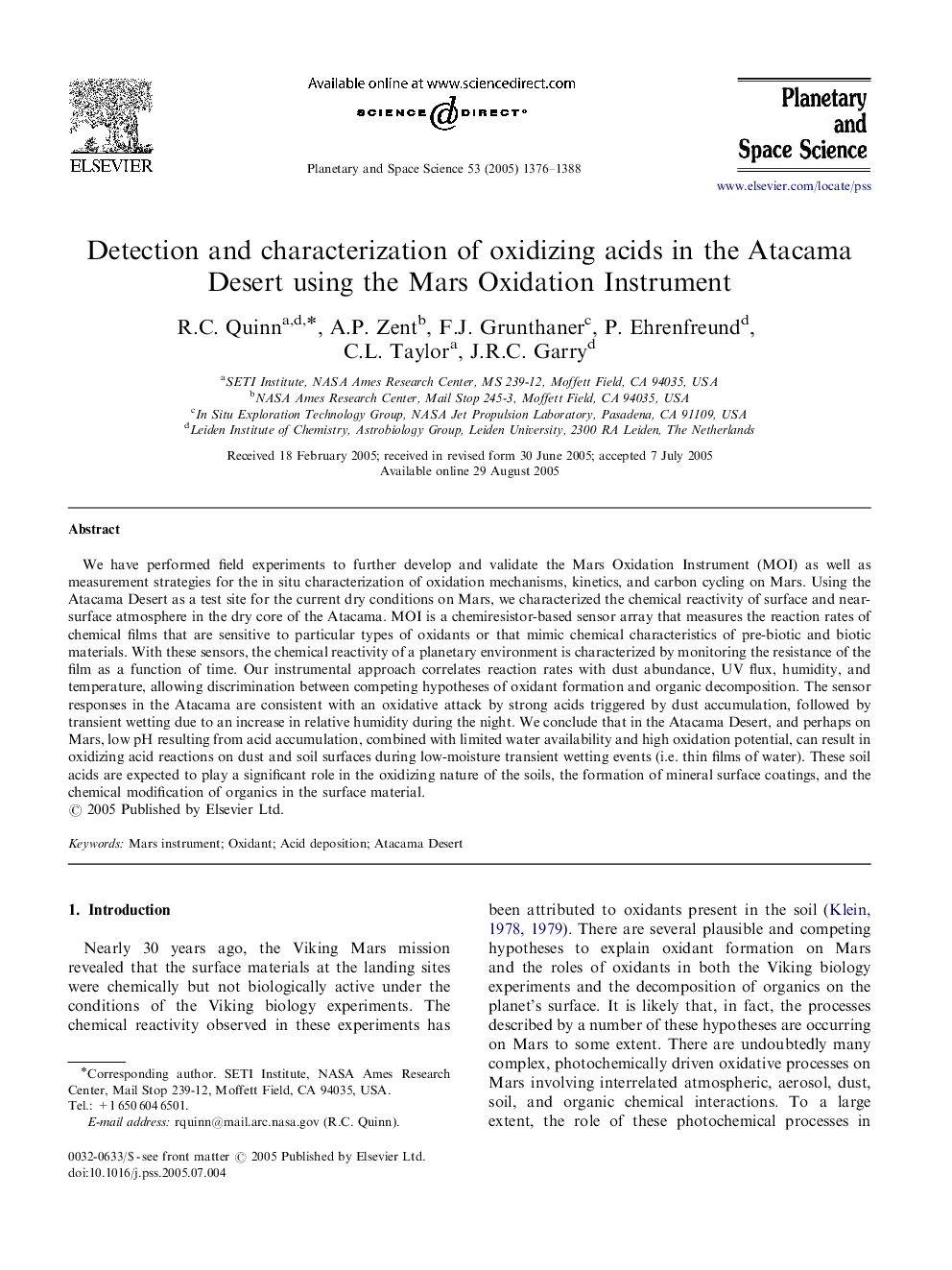| Article ID | Journal | Published Year | Pages | File Type |
|---|---|---|---|---|
| 10705573 | Planetary and Space Science | 2005 | 13 Pages |
Abstract
We have performed field experiments to further develop and validate the Mars Oxidation Instrument (MOI) as well as measurement strategies for the in situ characterization of oxidation mechanisms, kinetics, and carbon cycling on Mars. Using the Atacama Desert as a test site for the current dry conditions on Mars, we characterized the chemical reactivity of surface and near-surface atmosphere in the dry core of the Atacama. MOI is a chemiresistor-based sensor array that measures the reaction rates of chemical films that are sensitive to particular types of oxidants or that mimic chemical characteristics of pre-biotic and biotic materials. With these sensors, the chemical reactivity of a planetary environment is characterized by monitoring the resistance of the film as a function of time. Our instrumental approach correlates reaction rates with dust abundance, UV flux, humidity, and temperature, allowing discrimination between competing hypotheses of oxidant formation and organic decomposition. The sensor responses in the Atacama are consistent with an oxidative attack by strong acids triggered by dust accumulation, followed by transient wetting due to an increase in relative humidity during the night. We conclude that in the Atacama Desert, and perhaps on Mars, low pH resulting from acid accumulation, combined with limited water availability and high oxidation potential, can result in oxidizing acid reactions on dust and soil surfaces during low-moisture transient wetting events (i.e. thin films of water). These soil acids are expected to play a significant role in the oxidizing nature of the soils, the formation of mineral surface coatings, and the chemical modification of organics in the surface material.
Keywords
Related Topics
Physical Sciences and Engineering
Earth and Planetary Sciences
Geophysics
Authors
R.C. Quinn, A.P. Zent, F.J. Grunthaner, P. Ehrenfreund, C.L. Taylor, J.R.C. Garry,
